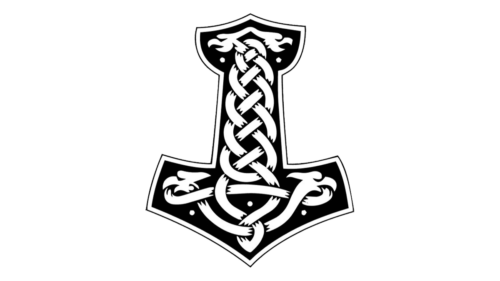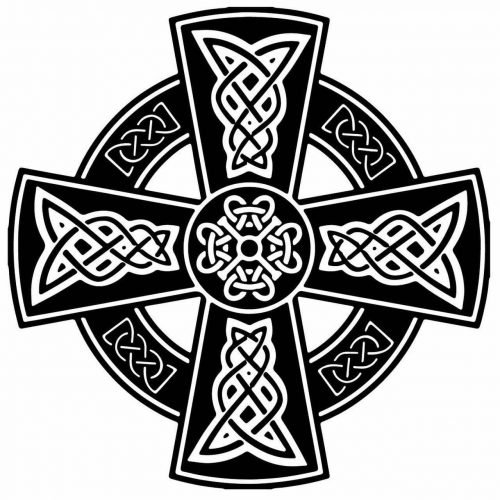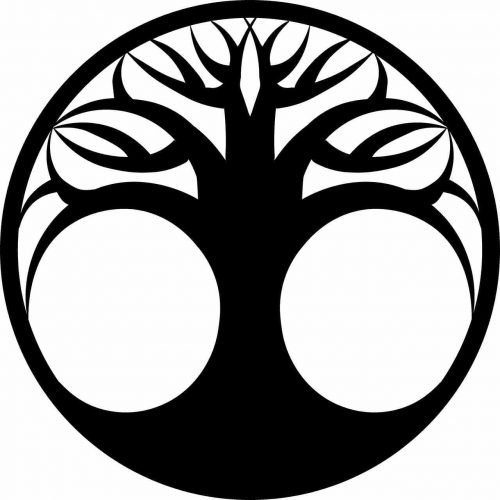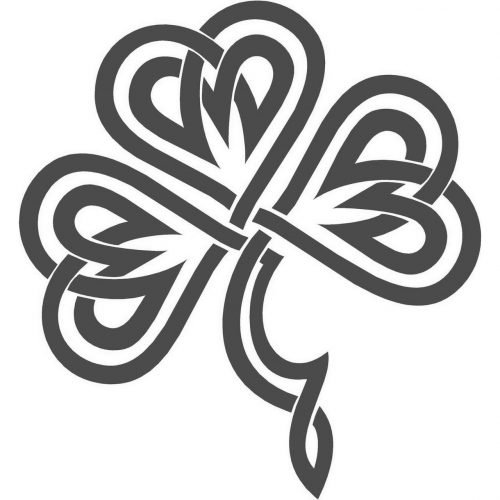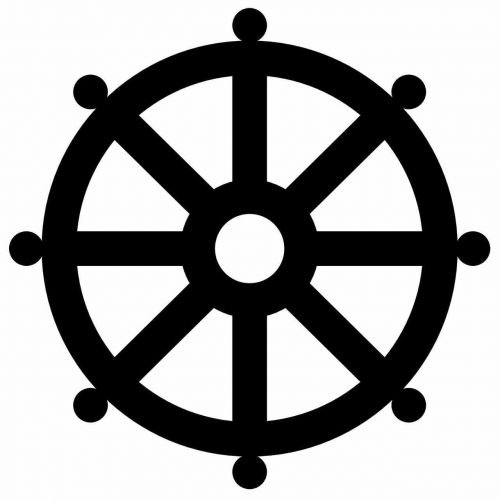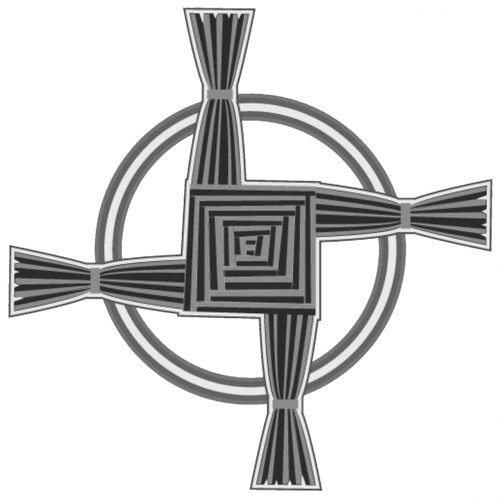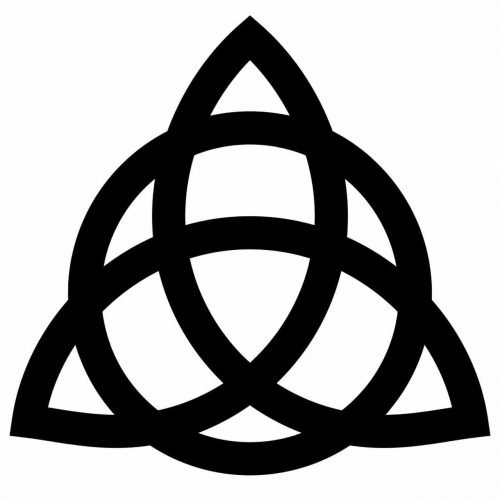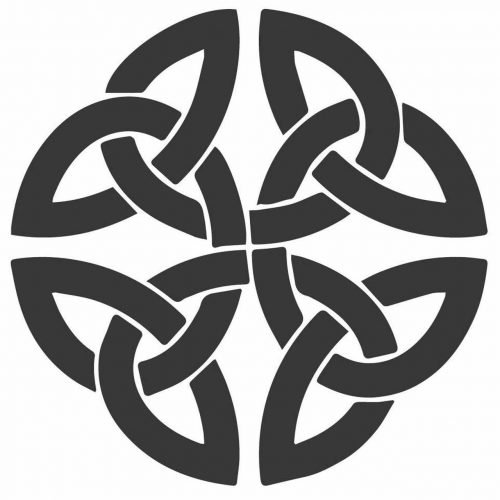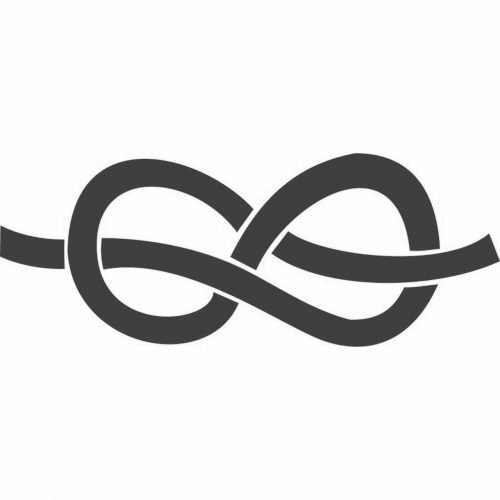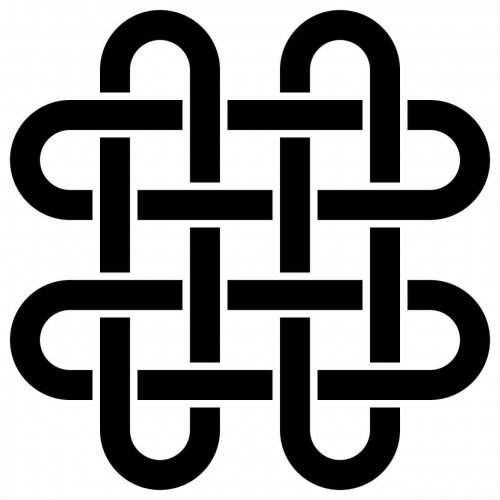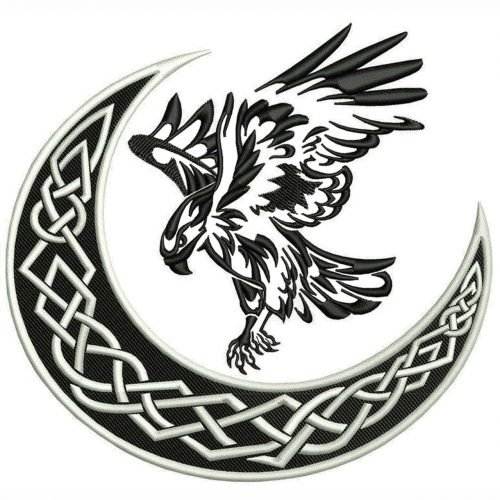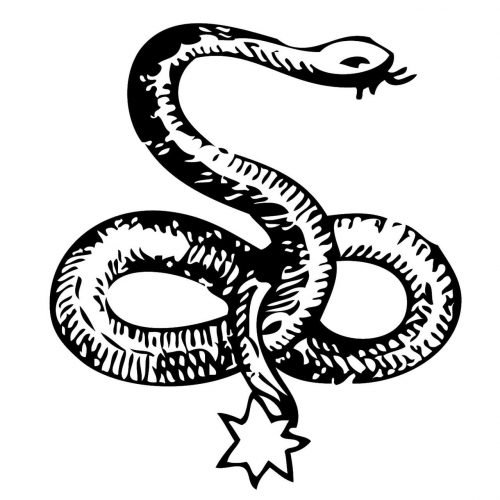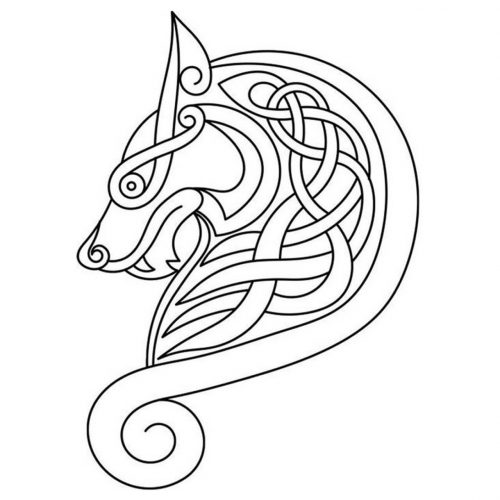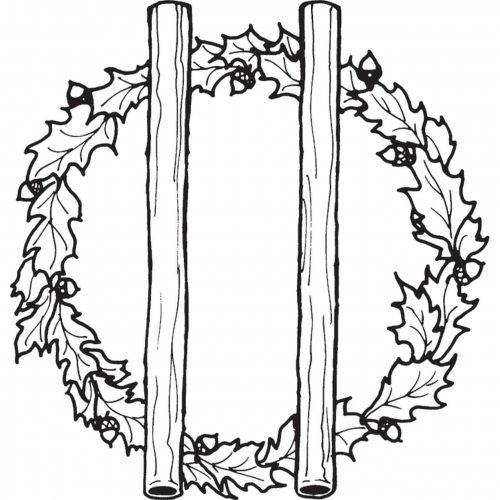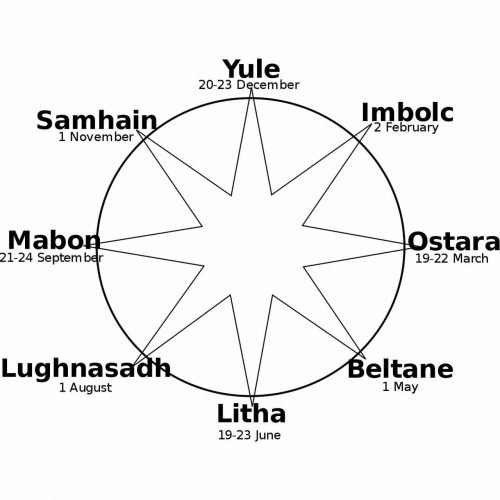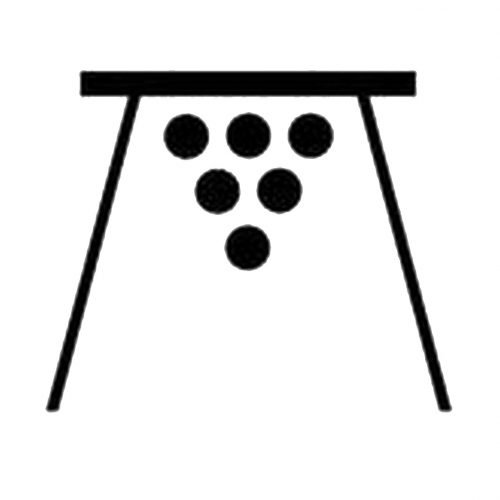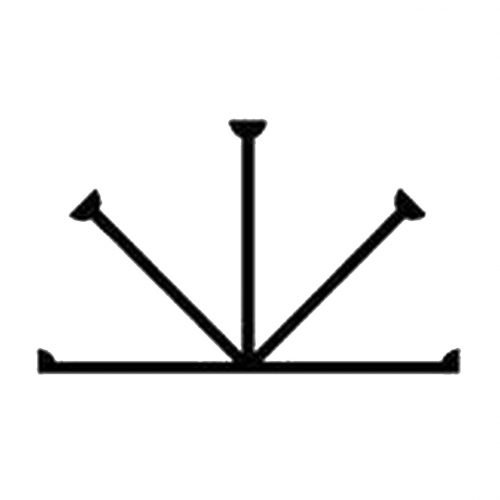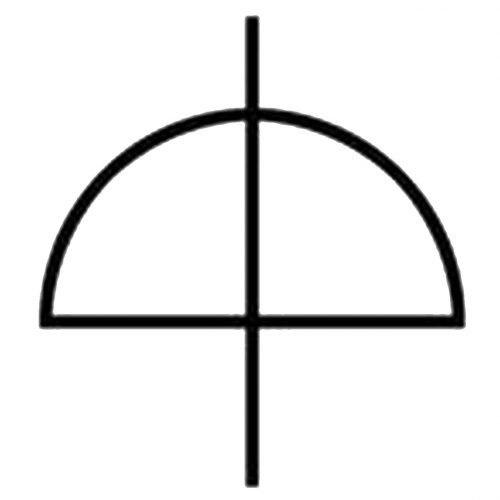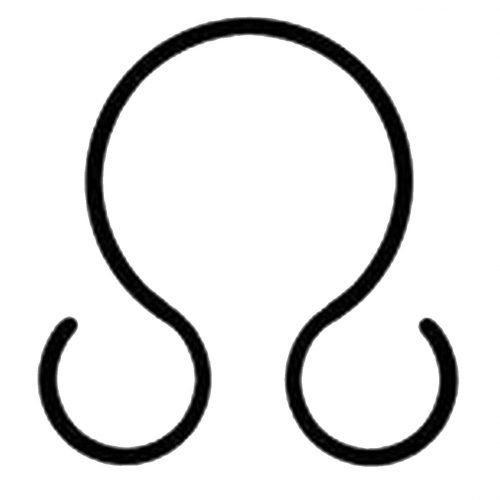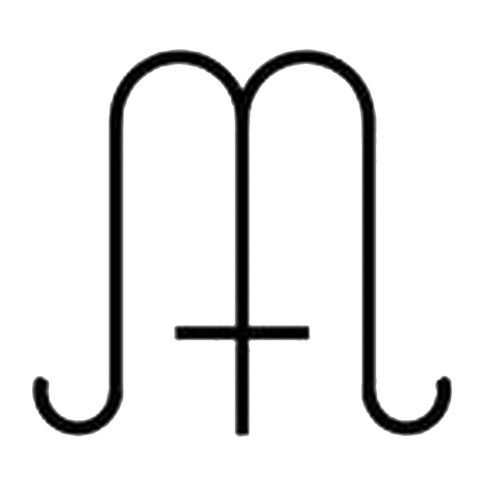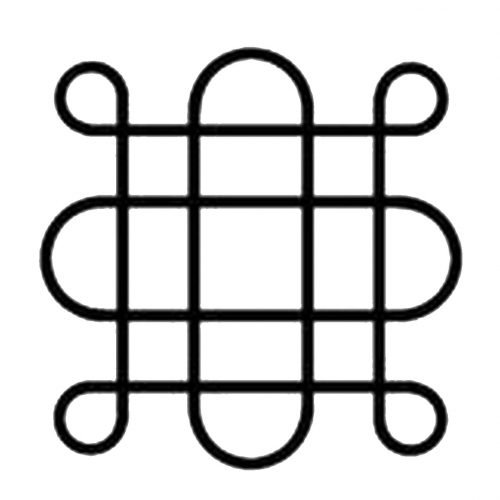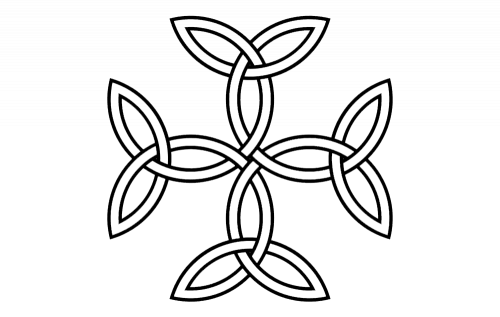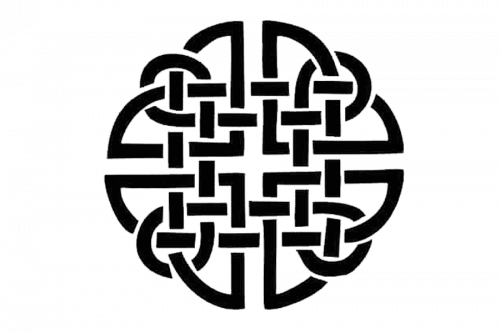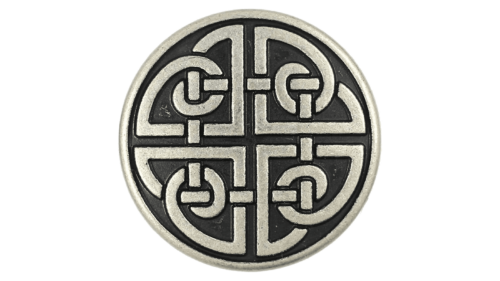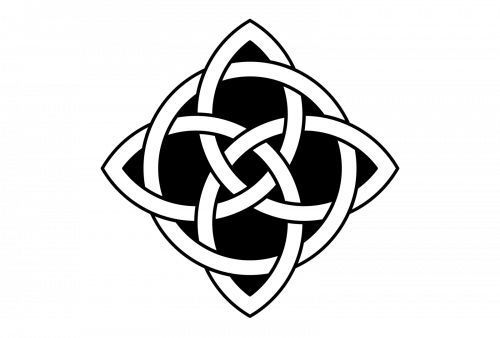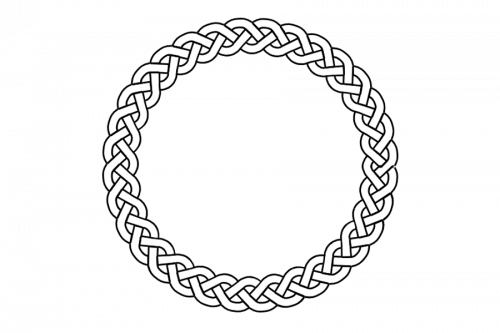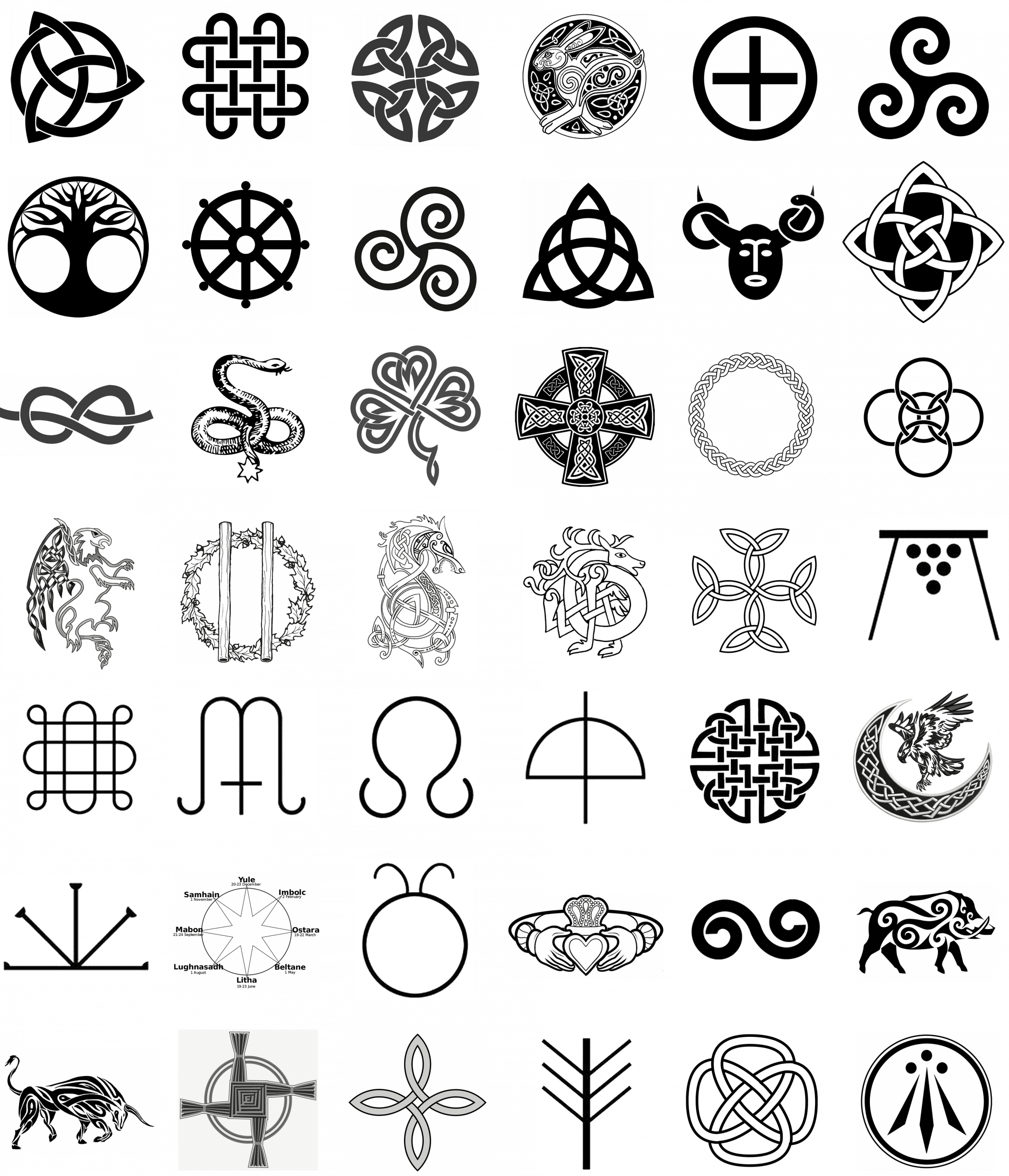
One of the oldest cultures, which had a huge impact on the development of modern art, was the Celtic civilization, which emerged in the V century BC. Its influence spread over a vast territory that included modern Ireland, England, Spain, Belgium, France, and part of Italy.
The ancient Celts believed that their ornaments had a powerful mystical power. Concluding it in patterned interlacing, the warriors reflected their beliefs, traditions, and perception of the world around them.
Any Celtic pattern has its special meaning. Each Celt chose a special pattern for its amulet, according to what he values lost. It was believed that this way he chooses his destiny. Every pattern had its meaning: health, well-being, power, money, love.
The Celtic pattern visually resembles a complex and cunning labyrinth. All lines of Celtic patterns are fantastically intertwined with each other, forming a particular ornament. This is the main idea: a person wanders through life in search of truth and self-knowledge.
Today Celtic ornaments are used in jewelry and amulets, as well as in art and tattooing. Before choosing an ornament in the Celtic style, you should understand what these symbols mean. If you believe the Celts, the correctly chosen ornament or symbol can change fate.
1. The Celtic Cross
One of the most famous Celtic symbols is The Celtic Cross. Celtic cross is a combination of a cross and a circle, encircling the place of intersection of lines. It symbolizes the harmony of the four elements or four sides of the world. The lower part of the cross is always expanding, showing the growing human needs. Also, the Celtic cross connects the sign of Christianity with a symbol of paganism (sun). It is believed that this symbol will save a person bearing it from the influence of dark forces and give him wisdom. For example, it is used in the logo of the Celtic football club.
2. The Tree of Life
The Celts depicted a tree in the form of hands stretching to the sky, and below they had the contours of roots. People have always believed in worldly life and a parallel world. This symbol meant the unity of the three worlds: underworld, life on earth, and in heaven.
According to the Celts, trees were considered to be ancient living things that played a very important role in their lives. With their roots firmly rooted in the earth and their branches reaching high in the sky, sacred trees connect us to the other world, spirits, and our ancestors.
3. Triskeles
Triskeles nowadays is one of the most popular Celtic symbols. Its main meaning is the unity of the Earth, Water, and Fire. It is believed that travel has powerful protective properties, brings money, and good luck. According to the beliefs of the Celts, all ornaments consist of the Thread of Life and the pattern cannot be changed, as it is granted by the gods.
Triskele man is considered an ancient Celtic symbol. In Celtic mythology, he is the god of spring and summer. Year after year, century after century he disappears and then returns, demonstrating the process of death and rebirth, the tide and ebb, life and creation.
4. Celtic Spiral
Spirals in Celtic mythology stand for spiritual growth. The Celts often used various types of helix spirals. Their meaning was in eternity, constant spiritual growth, harmony between body, spirit, and mind.
This symbol embodies ether energy emitting. It also symbolizes the growth, birth, and evolution of consciousness. The same spiral symbol is often transmitted as a labyrinth in many ancient cultures, including Celtic. As a spiral labyrinth, it means the path we all take in life.
The spiral is also a symbol of space. In this respect, the spiral comes out. The wise Celts understood that the universe is not only infinite but also constantly expanding.
5. The Shamrock
Legends suggest that St. Patrick ripped the shamrock off the Irish soil to demonstrate the meaning of the Trinity Father, Son, and Holy Spirit. The plant was believed to have mystical power in that its petals would stand upright, warning of an impending storm.
The shamrock remains the most famous symbol of Ireland. Celtic trefoil brings good luck in undertakings, protects from bad eyes, protects from bad words and evil people.
6. Wheel of Taranis
In Celtic mythology, Taranis was the god of thunder. Many images of the bearded god with a flash of lightning in one hand and a wheel in the other were found in Gaul, where this deity was associated with Jupiter.
The Taranis Wheel was an important symbol in historical Celtic polytheism, apparently associated with a certain God, identified as the sky, the sun, or the god of thunder, whose name is testified as to the Taranis Lucan. Numerous Celtic coins also depict this wheel.
7. Awen
The Awen symbol is often described as rays emanating from three points of light.
Different Neodruid groups and individuals have their interpretations of this symbol. These three lines relate to the earth, sea, and air; body, mind, and spirit; or love, wisdom, and truth. It is also said that awakening is not just an inspiration, but an inspiration of truth; without awakening, one cannot proclaim the truth. The three pillars of awakening are understanding the truth, loving the truth, and maintaining the truth.
8. The Claddagh Ring
Claddagh Ring is a traditional Irish ring given as a sign of friendship, love, or marriage. The symbol is based on the heart, meaning, of course, love. The heart is crowned with a crown – it is loyalty, loyalty to ideas, to the homeland, to the King, and the family. The heart is in the hands, which represents friendship, protection, and support.
9. Brigid’s Cross
One of the oldest Irish symbols is the cross of St. Brigid. This cross has solar symbolism. Usually, the symbol is hung on the front door or in the hallway. It has long been believed that the house, which has such a cross, is under the patronage of St. Brigid.
The cross is woven on the feast day of St. Brigid, which is February 1. Originally, it was a celebration of purity and holiness, the day of the young goddess Brig. Legends say that the very first cross Brig weaved to her dying father. Father, having understood its meaning and being not baptized, decided to get baptized before his death.
10. Triquetra
Triquetra — is a simple “triangle”, which denoted all the triangular forms. Nowadays, this symbol implies a more complex figure consisting of three elements, usually with the addition of a circle inside or outside the figure. Because in medieval Celtic culture the triquetra was rarely depicted alone, it can reasonably be regarded as a contextual symbol, which was used to fill the space or complement the ornament of more complex compositions.
The triquetra is a very old symbol, and very important in Neopaganism because it is believed to represent the three stages of the triple goddess (Virgin, mother, and wise woman).
11. The Celtic Knot
Celtic interwoven knot usually consists of a single thread. This thread symbolizes the path of life along which, as in a labyrinth, a person passes to get to the center. The center of the knot is nothing but the highest degree of spirituality.
The interweaving of the lines of the Celtic circle means neither beginning nor end, the continuity of eternal love and the binding together, or the interweaving of two souls or spirits.
The Sailor’s Knot
The Sailor’s Know is a fine rhomboid and ornate knot, which stands for unconditional love. The name was given to it, as the ancient sailor’s wives these ornaments to remembers of their loved ones, while they were far away.
Bowen Knot
The Bowen Knot is one of the simplest Celtic ornaments, which has a minimalist square shape with four loops on the peaks. The knot symbolizes the true love and loyalty of a man to his woman.
Solomon’s Knot
Solomon’s Knot is a solid and masculine ornament, which stands for the unity of a man with the heavenly. One of the most ancient Knots of the Celts, it was named after King Solomon.
12. Animals
The Bird
The Celts also depicted various animals on their ornaments and amulets, and each of the creatures had its meaning. Thus, the birds in the Celtic culture are a symbol of freedom. They were also considered to be messengers of heaven, bringing the will of the gods to the earth.
The Hare
Hare was also one of the sacred animals for the Celts. It symbolized abundance and prosperity.
The Snake
The image of snakes had a positive meaning among Celts too. According to ancient beliefs, these animals are excellent healers. Besides, snakes have a deep knowledge of magic and great wisdom in life.
The Deer
The animal Deer that symbolized sunlight and strength was a deer. Its horns, which fall and grow every year, indicate the impact on the nature of space forces. They signify the sacred Tree of Life. Spreading the vital energy around it, it was a source for the Celts to help them grow and revive spiritually.
The Boar
The Boar in the Celtic mythology symbolized not only the strength and stubbornness of the accident warriors and hunters but also the hospitality of their women, as the meat of the animal was considered to be a delicacy.
The Bull
One of the Celtic symbols of fertility and prosperity, the Bull was depicted on the walls of all the houses of the Celts. It was worshiped both by men and women.
13. Mythological Creatures
Not only the real animals could be seen in the Celtics ornaments, but also such mythological creatures as Dragons and Griffins. These symbols are very popular nowadays.
The Dragon
Symbol of unbeatable power, the Celtic Dragon is usually drawn with one line, representing wholeness and eternity. The creature has a sharp arrow on its tail, which stands for energy and immortality.
The Griffin
A creature with a body of a lion and the head of an eagle – Griffin, combines the strong sides of both powerful animals and symbolizes loyalty, nobility, and balance.
14. Druid Sigil
Sigil is usually a rounded symbol with an ornament inside. In the case of Druid Sigil, it is a circle with two vertical parallel lines, intertwining it. The symbol stands to represent Mother Earth and its fertility. The Sigils were usually used as magical elements, and held by only a small group of people, as for the rituals the secrecy was important.
15. Gaelic Festivals
Celts had a very intense and interesting calendar, and almost all their festivals also had graphical symbols. The Celts composed special Gaelic Festivals.
Yule
During this holiday, everyone welcomed the New Sun, which rose from the darkness. The Celtic winter solstice holiday was later mixed with the Roman tradition of Saturnalia, the Scandinavian tradition of Yule, and Christian Christmas.
Imbolc
The Return of the Light. It is, in fact, the end of winter. Traditionally, on this holiday Imbolc, rituals aimed at well-being were held.
Eostre
Eostre, or the day of the vernal equinox is the day of the true beginning of spring. The predecessor of the Easter.
Beltane
The day when the doors of the other world were opened. Beltane — the middle between the vernal equinox and the summer solstice, marked the arrival of summer. On this day, people asked the gods to extend the good weather to have more crops.
Lammas
Lammas, or the summer solstice, is the moment when the world is known to mature, filled with energy and strength. The main for the Druids. The starting point from which the Sun begins its journey to “death”.
Lughnasadh
Holiday in honor of the Celtic god Lughnasadh — the patron saint of agriculture and crafts. Lughnasadh has always been accompanied by songs, dances, and various games.
Malbon
Malbon or Autumn equinox – time to sum up. It is also time for the last harvest. The celebration of the fertile soil.
Samhain
The holiday Samhain is closely connected to the theme of death and memorizing the ancestors. One of the most important festivals in the Celtic Calendar.
16. Double Spiral
The double spiral symbolizes the duality of everything about our world. The duality of nature, life and death, the eternal balance, opposites and how they complement each other, yin and yang, birth with death, feminine with masculine, sun, and moon, light and darkness, day and night. The double spiral was thought to represent the equinoxes, in which day and night have the same duration.
17. Cernunnos
Cernunnos is the Celtic symbol, depicting one of the main gods — the god of fertility and life in general. He was usually depicted sitting cross-legged or with a deer and a bull standing side by side, dressed in a sleeveless tunic, with a necklace around his neck. His head was adorned with a pair of branching deer antlers, and the name “horned” itself suggests that he was a god of the forest and wild animals or a god of plenty. Cernunnos was the god of the underworld, associated with the cycles of death and rebirth of nature.
18. Cross of Triquetras (Carolingian Cross)
Carolingian Cross is the cross formed by triquetras. Naturally, this symbol was exploited as a sign of the male trinity, so its originally inappropriate female form was interpreted in this spirit. The triquetra represents the three aspects of the goddess (the virgin goddess, the mother goddess, and the wise old woman). Some researchers cite the meanings of this symbol as the movement of the Sun, the three phases of the luminary – at dawn, at the zenith, and sunset.
19. Dara Celtic Knot
Dara Celtic Knot shows an intertwined ornament, resembling the tree roots. The name of the knot is derived from the Irish word “Doire” which means “Oak”. So the graphical representation of the knot’s name refers to the root structure of the old oak tree. Like other Celtic images, the Dara knot consists of interlaced lines with no beginning or end. The Celts and Druids worshipped nature, especially old oaks, and considered them holy. They regarded this tree as a symbol of solidarity, strength, discernment, and perseverance. Likewise, the Celtic binder of the Gift symbolizes the base from the oak tree with a similarly representative source of inner strength.
20. Quaternary Celtic Knot
Quaternary Celtic Knot is something not very common, as the celts preferred using the threes or circles, which they believed meant eternity and life. Although, in this knot, the square is inscribed in a circular shape. This symbol is responsible for protecting the soul of its owner from negative energy. It symbolizes support and foundation, gives a sense of confidence and protection, a feeling of earthly firmness underfoot. At the same time, the knot has no beginning and no end, which symbolizes infinity.
21. Eternity Knot
The eternity or infinity knot can be seen in many cultures and religions, but the Celtic one is very well recognizable, as-built around threes. The Celtic Eternity Knot has three loops. This sign is considered the most revered and popular. Its meaning is directly related to the usual rope or cord. Visually, it resembles simple but very beautiful weaving. At the same time pull such a rope can be pulled in all directions. It symbolizes eternal youth, beauty, and immortality.
22. Five Fold Symbol
Not the most famous Celtic symbol, the Five Fold, is a representation of inner balance and harmony. Its simple structure, formed by five thin circular rings, has a deep meaning like everything in the Celtic culture. Each ring stands for one of five basic elements: air, earth, fire, water, and the sun. And all the elements together form an image, like all the elements and traits of the person form him, balancing and harmonizing.
23. Triskelion
Triskelion is definitely one of the most popular Celtic Symbols. This twisted character reflects the Celtic belief that everything important is made up of threes. The Triskelion has three clockwise curves connected from a central point. The name of the symbol is derived from the Greek word “Triskele”, which means “Three-legged”. The triple helix (the second name of Triskelion), is one of the most famous and ancient ornaments on the planet, commonly used to refer to the sun or the energy of etheric radiation.
24. Circular Knots
Circular Knots take a special place in the intense and complicated Celtic symbols system. The Celtic amulets are based on knots of different shapes and sizes, and each of them has its special meaning. The circle represents the sun, the inner life, and the infinity. Infinity of the cycle of life, of the humans’ power, and nature, of course.
25. Ailm
The Celtic symbol Ailm comes from the first letter of the Celtic set of letters Ogam. Ailm is considered a type of conifer or silver fir. In ancient Celtic tree legend, evergreen firs were associated with the restoration of man’s inner soul. The Celts considered trees to be the personification of power. Ailm represents strength, perseverance, and flexibility, as well as restoration, sanctification, well-being and maturity, and the most important — inner power.
What do the Celtic symbols mean?
Celtic culture can not be imagines without the ornaments and symbols, each of which has its own deep philosophical meaning. The symbols reflect the perception of the world by Celts, their religion, values, and beliefs.
Are Celtic symbols Irish or Scottish?
The Celts were an ancient nationality that in earlier times inhabited much of Europe. History owes to the Celts a mystical symbolism still often found and used as a national treasure in both Scotland and Ireland.
What is the oldest Celtic symbol?
It is hard to say, which of the Celtic symbols is the oldest, however, many historians believe that it is a Celtic Cross. The cross is a religious symbol in many cultures. As for the Celtic cross, it is a symbol of all things, the interconnection of feminine and masculine energy.
Is the Celtic knot a pagan symbol?
The Celtic Knot, also known as Triquetra, is one of the most famous Celtic ornaments. It first appeared as a pagan image, but throughout the years transformed into a representation of a Holy Trinity, one of the most significant symbols of Christianity.


